

 Add to favorites
Add to favorites
The heart-shaped leaves are embossed with large sections of silver so that no two leaves area like, much like a snowflake. They are velvety to the touch and quite matte in texture. Their vines hang gracefully from a full-bodied plant and can be encouraged to grow as long as you wish. This is an easy-care, low-light-tolerant indoor plant that will quickly work its way into your heart.
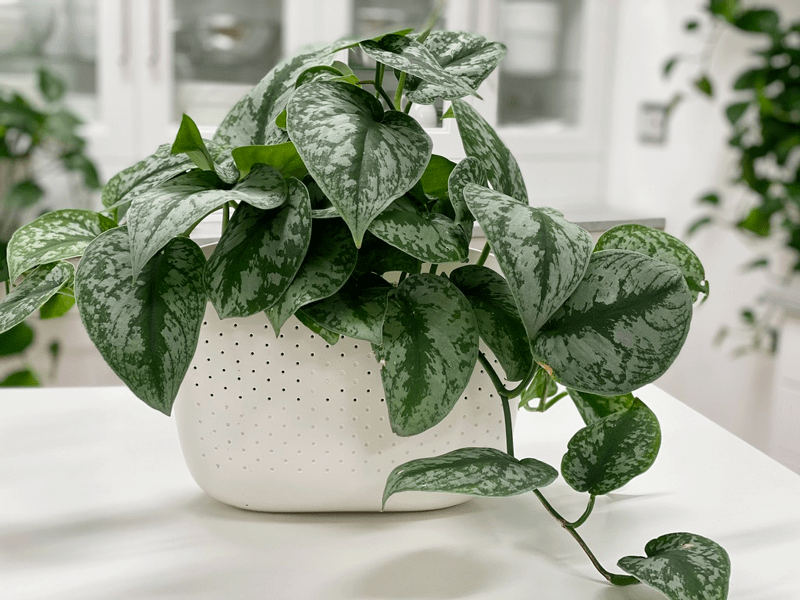
You know… I LOVE pothos plants… all of them! But I will admit that I heavily lean towards the Silver Satin. The leaves are thicker, feel very stable, present gorgeous color patterns, and win the award for hardiness and durability. At this very moment, I have seven of these lovely plants, and so far, I haven’t had any issues, bugs, or mishaps. Some seem to grow quicker than others, but I don’t question it. I enjoy their individuality. Ready to dive into the care of these lovely plants? I am!
The Silver Satin pothos likes bright, indirect light year-round. Harsh, direct sunlight will scorch the leaves, while too little light will cause the leaves to lose their variegation. What does indirect light mean? For outdoor plants, indirect sunlight is caused by such things as clouds covering the sun, or leaves from trees above the plant breaking up the full strength of the sunshine. For indoor plants, indirect sunlight is the weak sunlight that reaches a potted plant placed at least 3 feet away from a sunny window.
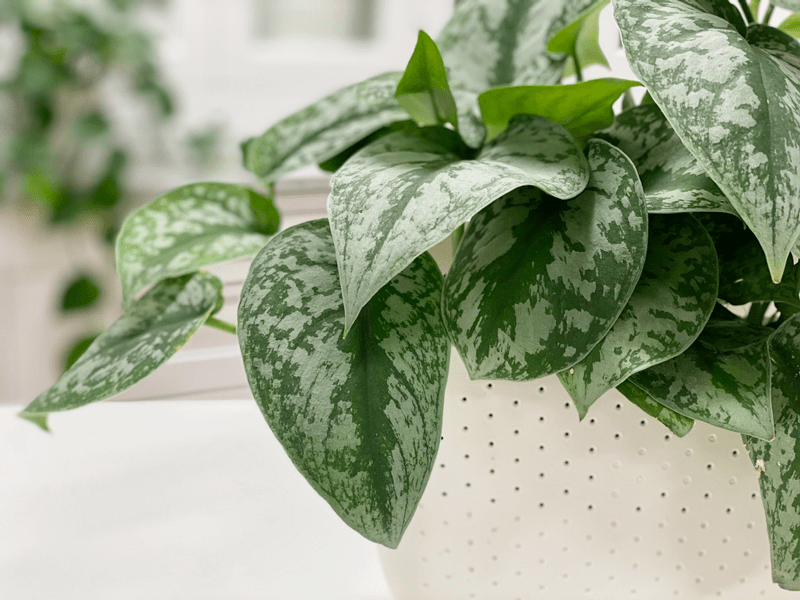
These lovely plants perform best when they are watered regularly and when you allow the soil to dry somewhat between waterings. Don’t worry if you forget—it will occasionally tolerate a missed watering! BUT I don’t recommend doing this too often, as it might stress the plant.
Water them once every week or two, depending on the season. I find that my plants require less watering during the winter months, since most indoor plants go dormant. Of course, this all depends on where you live. Here in Oregon, we experience four seasons. It’s also good to note that smaller potted plants will require more watering, since there isn’t much soil to hold moisture.
Personally, I let my pothos plants dry out to about 75% in between waterings. When I do water them, I take them to the sink and soak them all the way through until water runs out of the base of the pot.
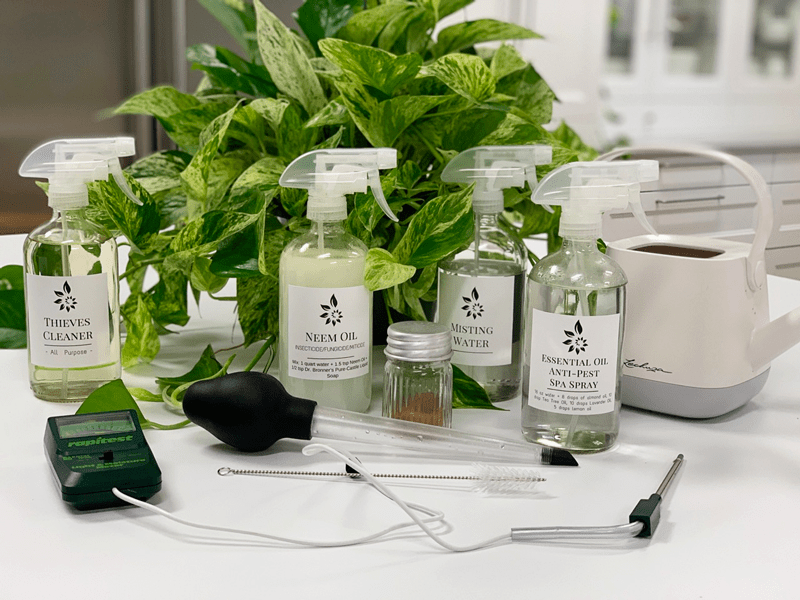
They prefer average to warm temperatures of 65-85 degrees. Do not expose to temperatures below 65 degrees even for a short time, because cold air will damage the foliage. Avoid cold drafts and heat vents.
Feed monthly in the spring through fall with general-purpose indoor plant fertilizer. How often a person needs to feed their plants seems to be all over the board, so find the right rhythm that works best for your plants. If you overfeed your plants, they will surely let you know. Here are a few things to watch for:
If you overfeed a plant and catch it in time, you might be able to save it. One approach is to remove the houseplant from its current soil and repot it in fresh soil. This technique is undoubtedly the best way to get rid of the excess nutrients affecting your plant. Alternatively, you can flush the soil, which involves drenching the soil with water and letting it drain out. Repeat this several times to help the soil get rid of excess fertilizer.
If you want to have healthy houseplants, you MUST inspect them regularly. Every time I water a plant, I give it a quick look-over. Bugs/insects feeding on your plants reduces the plant sap and redirects nutrients from leaves. Some chew on the leaves, leaving holes behind them. Also watch for wilting or yellowing, distorted, or speckled leaves. They can quickly get out of hand and spread to your other plants.
IF you see ONE bug, trust me, there are more. So, take action right away. Some are brave enough to show their “faces” by hanging out on stems in plain sight. Others tend to hide out in the darnedest of places, like the crotch of a plant or in a leaf that has yet to unfurl.
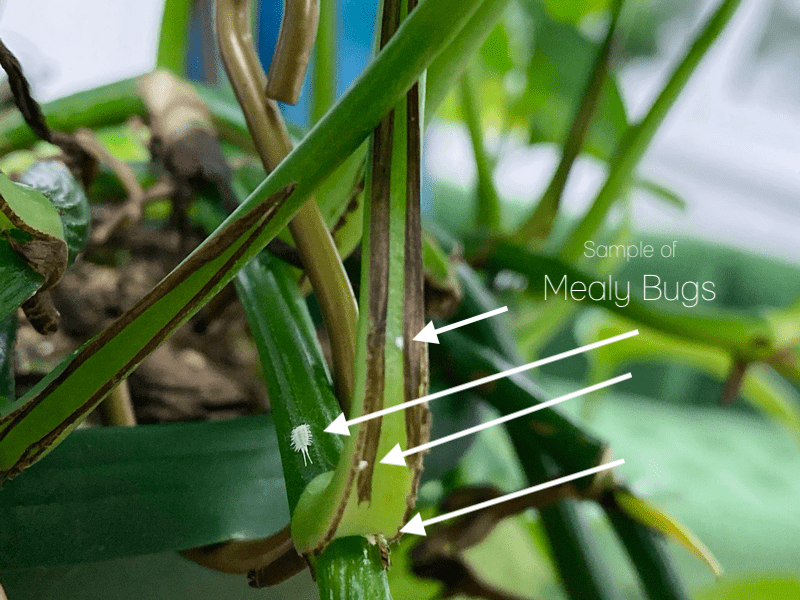
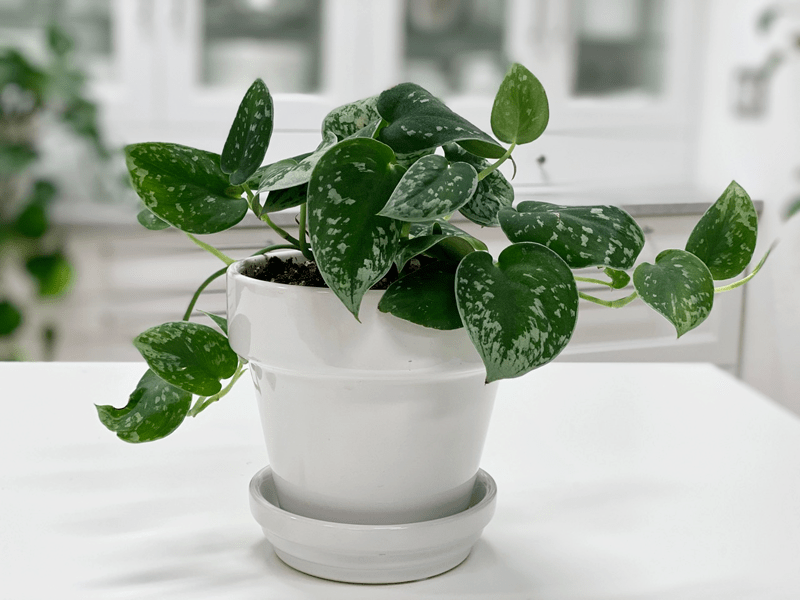
Diagnosing what is going wrong with your plant is going to take a little detective work, but even more patience! First of all, don’t panic and don’t throw a plant out prematurely. Take a few deep breaths and work down the list of possible issues. Below, I am going to share some typical symptoms that can arise.
When I start to spot troubling signs on a plant, I take the plant into a room with good lighting, pull out my magnifiers, and start by thoroughly inspecting the plant.
Curling Leaves
Brown Leaf Tips
Yellow or Brown Leaves
Brown Spots Surrounded by Yellow Halos
Small Stunted Leaves
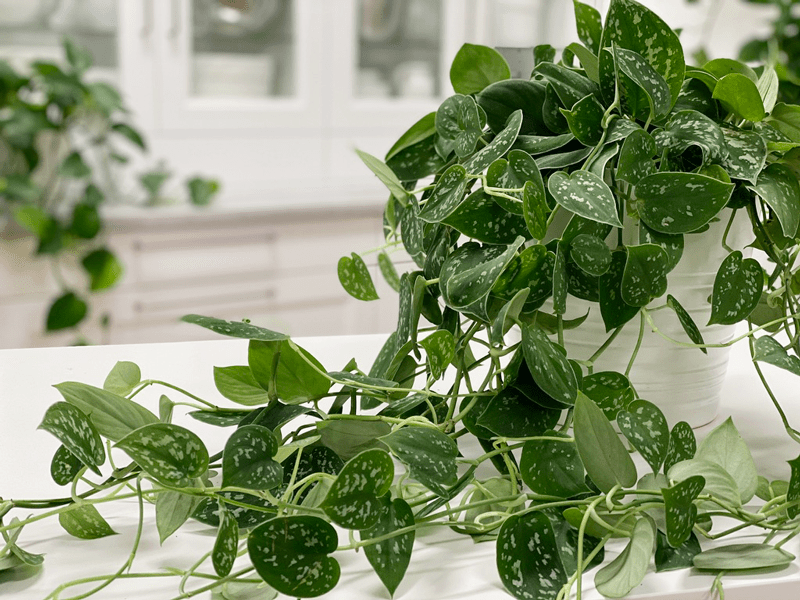
Your plant will benefit from occasional pruning, which helps it to branch out and become fuller. Spring is the best time to cut it back. If you live in a climate that is warm year-round, you can prune as needed. Use sharp pruners to avoid tearing the stems. I love the idea of pruning (cutting back vines), but I’ll be darned if I don’t tremble when holding the scissors! The payoff is rewarding (in time), but it feels like I am cutting my own hair, which took too long to grow out. Are you feeling me?
Pothos are mildly toxic to pets and humans. This plant is TOXIC if ingested. It can cause a mild irritation to the mouth if chewed or swallowed and also a mild digestive reaction. It may also cause skin irritation. Keep the plant out of reach from animals and kiddos.